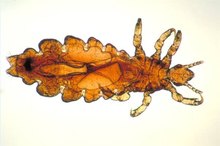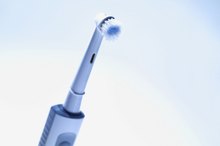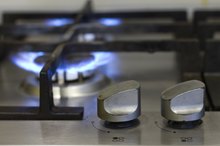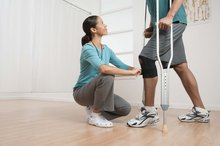What does fact checked mean?
At Healthfully, we strive to deliver objective content that is accurate and up-to-date. Our team periodically reviews articles in order to ensure content quality. The sources cited below consist of evidence from peer-reviewed journals, prominent medical organizations, academic associations, and government data.
The information contained on this site is for informational purposes only, and should not be used as a substitute for the advice of a professional health care provider. Please check with the appropriate physician regarding health questions and concerns. Although we strive to deliver accurate and up-to-date information, no guarantee to that effect is made.
How to Disinfect a Vehicle of Head Lice
The Mayo Clinic notes that it's rare to get infested with head lice in any other way than direct head-to-head contact 2. Head lice can't live very long without a blood meal from a human host–only around two days. The louse's eggs (nits) die when removed from a temperature that's similar to that of the human head in about a week. But it's still possible to become infested–or reinfested–with head lice if you come into contact with contaminated belongings and environments where live lice can linger. Disinfecting a vehicle of head lice errs on the side of safety.
Removing Head Lice from Cars
Remove all personal belongings from the vehicle that might have become infested with head lice, such as clothing, scarves, caps, brushes, and combs. Launderable items should be machine-washed in soapy water at at least 130 degrees F and dried on high heat, notes the Centers for Disease Control. Anything that cannot be washed and dried (such as stuffed animals and pillows) may be stored in plastic bins for up to two weeks. Soak items in hot water of at least 130 degrees F for between five and 10 minutes.
How to Clean Your House After a Case of Head Lice
Learn More
Vacuum the vehicle well using a hand-held attachment, and pay close attention to the area where the lice-infested person sat. Otherwise, the CDC notes there's no need to spend exorbitant amounts of money on cleaning products or services to avoid reinfestation.
Alternately, simply don't enter the vehicle for at least two days, at which point live lice will have expired.
Tips
Handle clothing, bedding and other soft items in the home in a similar manner as described in Step 1. The CDC advises vacuuming if a person infested with head lice has had contact with your home environment.
Warnings
Don't use fogs or spray fumigants to kill head lice in any environment, warns the CDC. These can cause serious side effects when inhaled or absorbed through the skin.
- Remove all personal belongings from the vehicle that might have become infested with head lice, such as clothing, scarves, caps, brushes, and combs.
- Alternately, simply don't enter the vehicle for at least two days, at which point live lice will have expired.
Related Articles
References
- CDC: Head Lice Prevention & Control
- Mayo Clinic: Head Lice
- InformedHealth.org [Internet]. Cologne, Germany: Institute for Quality and Efficiency in Health Care (IQWiG); 2006-. Head lice: Overview. 2008 Mar 5 [Updated 2018 Dec 13].Available from: https://www.ncbi.nlm.nih.gov/books/NBK279329/
- Rassami W, Soonwera M. Epidemiology of pediculosis capitis among schoolchildren in the eastern area of Bangkok, Thailand. Asian Pac J Trop Biomed. 2012;2(11):901–904. doi:10.1016/S2221-1691(12)60250-0
- van der Wouden JC, Klootwijk T, Le Cleach L, et al. Interventions for treating head lice. Cochrane Database Syst Rev. 2018;2018(5):CD009321. Published 2018 May 22. doi:10.1002/14651858.CD009321.pub2
- Bin Saif GA, Ericson ME, Yosipovitch G. The itchy scalp--scratching for an explanation. Exp Dermatol. 2011;20(12):959–968. doi:10.1111/j.1600-0625.2011.01389.x
- Head lice infestations: A clinical update. Paediatr Child Health. 2004;9(9):647–657. doi:10.1093/pch/9.9.647
- Izri A, Chosidow O. Efficacy of machine laundering to eradicate head lice: recommendations to decontaminate washable clothes, linens, and fomites. Clin Infect Dis. 2006;42(2):e9–e10. doi:10.1086/499105
- Değerli S, Malatyalı E, Mumcuoğlu KY. Head lice prevalence and associated factors in two boarding schools in Sivas. Turkiye Parazitol Derg. 2013;37(1):32–35. doi:10.5152/tpd.2013.08
- Greive KA, Barnes TM. In vitro comparison of four treatments which discourage infestation by head lice. Parasitol Res. 2012;110(5):1695–1699. doi:10.1007/s00436-011-2687-7
- Devore CD, Schutze GE. Head lice. Pediatrics. 2015;135(5):e1355-65.
- Devore CD, Schutze GE; Council on School Health and Committee on Infectious Diseases, American Academy of Pediatrics. Head lice. Pediatrics. 2015 May;135(5):e1355-65. doi:10.1542/peds.2015-0746
Tips
- Handle clothing, bedding and other soft items in the home in a similar manner as described in Step 1.
- The CDC advises vacuuming if a person infested with head lice has had contact with your home environment.
Warnings
- Don't use fogs or spray fumigants to kill head lice in any environment, warns the CDC. These can cause serious side effects when inhaled or absorbed through the skin.
Writer Bio
Lisa Sefcik has been writing professionally since 1987. Her subject matter includes pet care, travel, consumer reviews, classical music and entertainment. She's worked as a policy analyst, news reporter and freelance writer/columnist for Cox Publications and numerous national print publications. Sefcik holds a paralegal certification as well as degrees in journalism and piano performance from the University of Texas at Austin.






